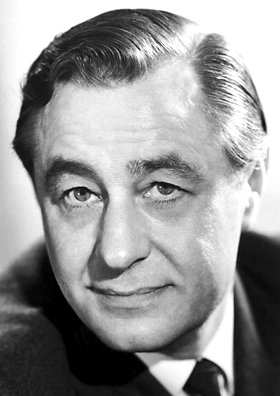George Porter facts for kids
Quick facts for kids
The Lord Porter of Luddenham
|
|
|---|---|
 |
|
| Born |
George Porter
6 December 1920 Stainforth, England
|
| Died | 31 August 2002 (aged 81) |
| Alma mater | |
| Known for | Flash photolysis |
| Spouse(s) | Stella Jean Brooke (since 1949) |
| Awards |
|
| Scientific career | |
| Fields | Chemistry |
| Institutions | |
| Thesis | The study of free radicals produced by photochemical means (1949) |
| Doctoral advisor | Ronald Norrish |
| Doctoral students | |
George Porter, also known as Baron Porter of Luddenham, was a famous British chemist. He was born on December 6, 1920, and passed away on August 31, 2002. In 1967, he won the important Nobel Prize in Chemistry.
Contents
Early Life and Education
George Porter was born in Stainforth, a town near Thorne in England. He went to Thorne Grammar School. Later, he earned a scholarship to study at the University of Leeds. There, he completed his first degree in chemistry.
During his studies, one of his teachers was Meredith Gwynne Evans. Porter later said that Evans was the most brilliant chemist he had ever met. In 1949, Porter earned his PhD from the University of Cambridge. His research focused on tiny, highly reactive particles called free radicals. These particles were created using light, a process called photochemistry. After finishing his PhD, he became a fellow at Emmanuel College, Cambridge.
Career and Scientific Discoveries
During the Second World War, George Porter served in the Royal Naval Volunteer Reserve. After the war, he began his research at the University of Cambridge. He worked under the guidance of Ronald George Wreyford Norrish. This is where they started the work that would later earn them both a Nobel Prize.
Flash Photolysis Technique
Porter's most important work involved developing a method called flash photolysis. This technique uses very short, powerful flashes of light. It helps scientists study molecules that exist for only a tiny fraction of a second. This method allowed him to find the first proof of free radicals. These are atoms or molecules with an unpaired electron, making them very reactive.
Later, he used flash photolysis to study photosynthesis. This is the process plants use to turn sunlight into energy. He looked closely at how light affects these reactions. He also explored how this research could help create a hydrogen economy. This is a system where hydrogen is used as a clean fuel source. Porter strongly believed in this idea.
Working at Universities and Institutions
From 1953 to 1954, Porter worked at the British Rayon Research Association. There, he studied how sunlight affected dyed fabrics.
In 1954, he became a professor in the Chemistry department at the University of Sheffield. He stayed there until 1965. It was at Sheffield that he continued his work on flash photolysis. He even designed and built his own equipment in the department's workshop. During this time, he also appeared on a television show called "Eye on Research," explaining his work.
In 1966, Porter became the Fullerian Professor of Chemistry and Director of the Royal Institution. While he was director, he helped set up a company called Applied Photophysics. This company made scientific instruments based on his group's research. In 1967, he was awarded the Nobel Prize in Chemistry. He shared this honor with Manfred Eigen and Ronald George Wreyford Norrish. In the same year, he also became a visiting professor at University College London.
Sharing Science with Everyone
George Porter was very good at helping people understand science. He wanted to make science interesting and easy to learn for everyone. In 1985, he became the president of the British Association. He also helped start the Committee on the Public Understanding of Science (COPUS).
He gave many important talks. In 1978, he gave the Romanes Lecture at the University of Oxford, titled "Science and the human purpose." In 1988, he gave the Dimbleby Lecture, called "Knowledge itself is power." From 1990 to 1993, he gave lectures on astronomy at Gresham College.
In 1976, he gave the famous Royal Institution Christmas Lectures. His series of lectures was called The Natural History of a Sunbeam.
Awards and Recognition
George Porter received many awards and honors throughout his life.
- In 1960, he was chosen as a Fellow of the Royal Society (FRS).
- He was also a member of the American Academy of Arts and Sciences (1979) and the American Philosophical Society (1986).
- He served as the President of the Royal Society from 1985 to 1990.
- Other important awards include the Davy Medal (1971), the Rumford Medal (1978), the Ellison-Cliffe Medal (1991), and the Copley Medal (1992).
He received honorary doctorates from several universities, including Heriot-Watt University in 1971 and the University of Bath in 1995.
In 1972, he was made a knight. This means he could use the title "Sir." In 1989, he was given the Order of Merit, a very special honor. In 1990, he became a life peer, which means he was given the title Baron Porter of Luddenham.
Porter was also the Chancellor of the University of Leicester from 1984 to 1995. In 2001, the university's chemistry building was named the George Porter Building in his honor.
Family Life
In 1949, George Porter married Stella Jean Brooke.
See also
 In Spanish: George Porter para niños
In Spanish: George Porter para niños

